
Brought to you by
Norwich Pagan Sphere
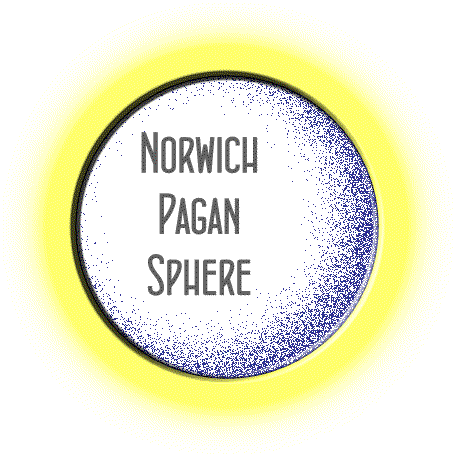
 |
Brought to you by
|
Even though her life was tragically short, Pocahontas's memory and legend live on. Whether she would recognise the shapes her story has taken is another matter. Her image was used and abused even during her lifetime, but her legend, though a distortion of her real story, has become a message of hope, and an inspiration for new heroes in literature and film. It also has significant links to Eastern England.
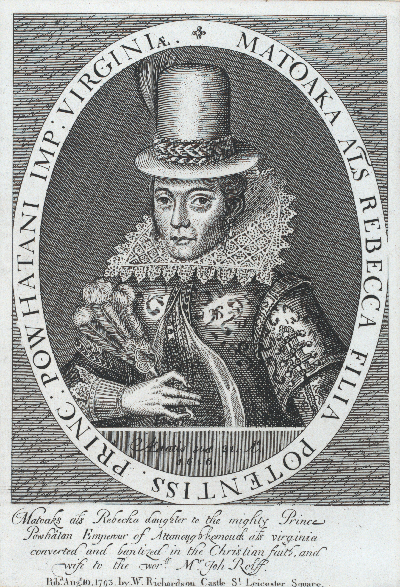
In April 1607, three ships sailed up what had been named by English explorers as the James River, the Powhatan to the people who already lived there, and who used the same name of themselves. The ships anchored at a peninsula with deep water on the north shore and set about building a stockade. This became Jamestown, which, despite being muddy and disease-ridden, with unreliable fresh water supplies, was the first successful English colony in the Americas, and the beginning of both the British Empire and the United States of America.
Popular history generally treats the occupants of those three ships as heroes, amongst the founding fathers (and they were all men) of America. The reality was somewhat different. Many of the settlers were after gold (in which they were disappointed) and were not interested in working towards an agricultural colony, and they were led by men who were more concerned about social status than practicalities. They were also arrogant usurpers of someone else’s land. They came with the temerity to assume they could claim the land of Tsenacomoco (which they renamed Virginia) for their King and the Virginia Company. The people who already lived there would have to adapt to civilisation (i.e. working for English masters and bowing to their ideas of agriculture and social organisation), accept King James as their monarch, and convert to Christianity. Otherwise, they were not worthy of consideration.
Most of the indigenous, Algonquian people of the region at the time were in a tribal confederacy under the rule of the Mamanatowick (Paramount Chief) of the Powhatan nation, whose name was Wahunsenaca, but generally recorded by the English simply as "Powhatan". He had a brother, Opechancanough, who would become Mamanatowick after Wahunsenaca’s death, and who, in December 1607, took captive a leader of the English who was exploring up the Chickahominy river. That man was called John Smith.
Smith is the source of a great deal of our knowledge about the Jamestown settlement’s beginnings and about relations with the indigenous peoples. Some of what he wrote about the latter is even true. Unfortunately, he made things up to put himself in a better light and, by the time he wrote his fullest account, in 1624, when relations between the English and the natives had really turned sour, he was writing for an audience who wanted their prejudices about the "naturals" and "savages" to be confirmed.
By 1624, most of the other people involved in what may or may not have happened in December 1607 were either dead or decidedly in the enemy camp. Smith claimed to have written to Queen Anne in 1616, extolling Pocahontas’ virtues and relating how she rescued him from execution by Wahunsenaca, but no evidence of that letter has emerged. He did not mention the rescue in his writings of 1608. Suspiciously, Smith related other examples of being rescued by well-born ladies in his earlier adventures as a mercenary in eastern Europe, and the literary motif of a native woman helping a European had appeared in Spanish sources as well. It perhaps also resonates with the Greek myth of Medea, who helps Jason steal the Golden Fleece, but there the resemblance ends, as Pocahontas, whilst allegedly disobeying her father, is never portrayed as showing Medea's more dysfunctional behaviour towards her family.
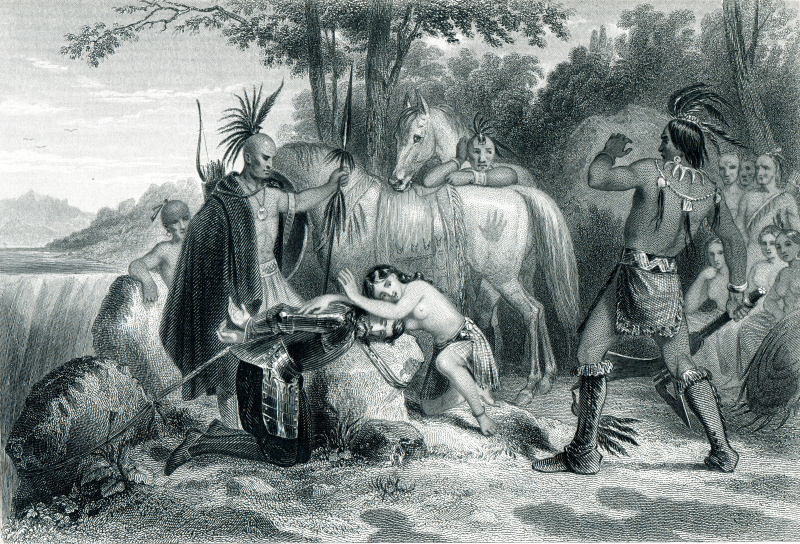
This ‘rescue’ of Smith by Pocahontas has become a key part of her legend, and one often interpreted by scholars as an initiation rite. However, it does not fit any such ceremonies actually practised, neither does the method of (mock) execution fit with Smith’s position as a captured stranger. Furthermore, it is extremely unlikely that a pre-pubescent girl, however much she might have been her father’s favourite, would have been present at such a ceremony.
Much more plausible is the second ceremony that Smith described, in which, though he may not have understood the full significance of it, he was inducted as a subject chief or Werowance under Wahunsenaca for the duration of the Englishmen’s stay – and Smith claimed to his captors that they were only hiding from the Spanish and did not intend to remain permanently. Wahunsenaca appears to have seen the English, with their exotic weapons, as potential allies against nearby non-Algonquian peoples, with whom there were on-going hostilities, and indeed against the Spanish, whose depredations further south were common knowledge. Smith also wrote that Pocahontas tipped him and others off when her father was going to attack and that she rescued an English youth, Henry Spelman, who had been left with the Powhatans as a hostage to learn their language, but who ran away. Spelman claimed he got away without assistance. A picture has thus been painted of a powerful young woman who defied her father to aid the English. The truth is rather more complicated.
Smith described Pocahontas as the "Nonpareil" of Virginia, as one without equal amongst her people. A favourite daughter of the Paramount Chief of the Powhatans, she allegedly disobeyed her father to bring aid to the English settlers. In fact, when parties of Powhatans arrived at Jamestown a number of times during 1608, carrying food to relieve the half-starved residents, they showed that they came in peace by putting her at the front. Who would bring a child like that on a raid? Pocahontas was a symbol of friendly relations, sent by her father. It may well be true that she and Smith spent time on these visits learning something of each others’ languages, and the settlers’ spirits doubtless rose on the occasions when she appeared at the head of a troop of food-bearers, but she was not the instigator. It is even possible that more than one girl came on different occasions.
Pocahontas was a nickname, meaning something like ‘Little Mischief’. She was not a princess either. She was the daughter of the nearest thing her people had to a king, but was not in the line of succession, as power was matrilineal, i.e. Wahunsenaca held his position by virtue of being his mother’s son, and it would pass at his death to another of her (or a sister’s) sons.
Pocahontas’ real names were not given much attention by the Englishmen who wrote about her, so there are conflicting opinions on the two that are associated with her: Amonute and Matoaka. One or other may have been her birth name, a name adopted on becoming a woman at 12 or 13, or ‘secret’ names; she may even have formally adopted Pocahontas as her adult name, we cannot be sure. Amonute has defied derivation, but Matoaka has two likely meanings: ‘flower between two streams’ (Custalow & Daniel) and either ‘one who kindles’ or ‘one who is kindled’ (Townsend). From a magical perspective, the two are not dissimilar. Custalow & Daniel note: "It is interesting that, later in life, Pocahontas became the Powhatan symbol of peace between two vastly different cultures…" (p. 6). A further significant change of name, following a radical change of circumstances, was to occur in 1613…
Smith left Virginia in 1609, fed up with internal resistance to good management of Jamestown. Relations with the Powhatans also declined without his presence, especially as it became increasingly clear that the English had no intention of leaving. That winter many starved. At some point Pocahontas reached adulthood and, in 1610, went to live further from Jamestown. She married a man called Kacoum. What happened to him later is unknown, although conjectures abound, ranging from him dying of some unrelated cause, through divorce, to him being murdered by the English. There is in any case no record of him, nor any offspring, after Samuel Argall kidnapped her in the territory of the Potomac people in the spring of 1613 and took her back to Jamestown as a hostage, a valuable pawn in negotiations with her father. She was soon sent up-river to a new settlement at Henrico, where she was indoctrinated in Christianity and met a man who was trying to grow tobacco, by the name of John Rolfe.
Rolfe had arrived in Virginia in 1610, following a sojourn in Bermuda, where his ship had been wrecked following a hurricane, an event that was an inspiration to Shakespeare’s The Tempest. The survivors built two smaller ships and were eventually able to reach Virginia. It was not a happy time for Rolfe; he had been accompanied on the voyage by his pregnant wife, whose child was born in Bermuda, but died after just a few days. The mother (whose name is not recorded) died shortly after arrival at Jamestown.
Pocahontas would have been used to the idea of hostages and people being taken from one tribe to another and being assimilated. It appears that she took this as her fate and came to terms with a new society in order to do the best for her own people. She adopted English dress and was baptised as a Christian. Those around her saw this as a conversion, but in all likelihood she adopted Christianity because it was the religion of her adoptive society, not because it was better than that of her own people and land.
She was given the Christian name of Rebecca, a reference to the Biblical story of Rebekah, who married Isaac, son of Abraham, and bore two sons, the eldest of whom, the red (haired) Esau, fated to serve the younger, Jacob. A clearer parallel to the English designs on the native peoples would be harder to find. Interestingly, in due course, some of Pocahontas’ kin came to stay with her, including her half-sister, Matachanna, and the latter's husband, Uttamatomakin, who was a priest and adviser to Wahunsenaca. Despite the celebration of Pocahontas’ ‘conversion’, the rest of her entourage seem to have resisted. It would seem that there was genuine affection between the newly renamed Rebecca and John Rolfe. After much soul-searching on his part, Rolfe proposed marriage (cohabitation with native women was commonplace and apparently tacitly accepted, but actually marrying one was a socially difficult step to take), which took place in April 1614. It seems that the marriage allowed Rolfe access to priestly knowledge about tobacco cultivation, and so brought about the financial salvation of the Virginia project, and vastly increased pressure on native land from the settlers’ highly profitable cash crop.
However, whilst there were seeds of future problems being sown with those of tobacco, the marriage brought what became known as the ‘Peace of Pocahontas’. The Virginia Company was at last getting revenue too, and it wanted to show off the "nonpareil" to its London backers. The Rolfes, with their young son Thomas and ten or eleven of Pocahontas’ people, Matachanna and Uttamatomakin included, set sail for England in the spring of 1616. Uttamatomakin had been specifically charged by Wahunsenaca with fact-finding.
The Powhatans were unprepared for the size, sights, sounds and smell of London. Used to a healthy lifestyle, including daily bathing in a river, they soon found London unbearable and arrangements were made for the party to be accommodated up the Thames in the then rural Brentford. They were feted and made the talk of the town, but any illusions about English intentions for Virginia must have been dispelled very quickly. We do not know what Pocahontas thought, except from one exchange reported by Smith. He eventually came to see her in Brentford and she was not happy with him, partly because she had thought he was dead. Despite Smith’s tendency to embroider facts, the fact that he records her criticism of him lends credence to the report. She excoriated him for breaking his oath in the Werowance ceremony and the bond with her father, and criticised the English generally for being deceitful.
At the time, she fully expected to return to Virginia, but her health deteriorated and she was seriously ill when her ship departed in March 1617. The ship halted at Gravesend in Kent, for her to receive medical attention, but she died a few days later and was buried in a hurry on 21st March. She never left the homeland of her adoptive society.
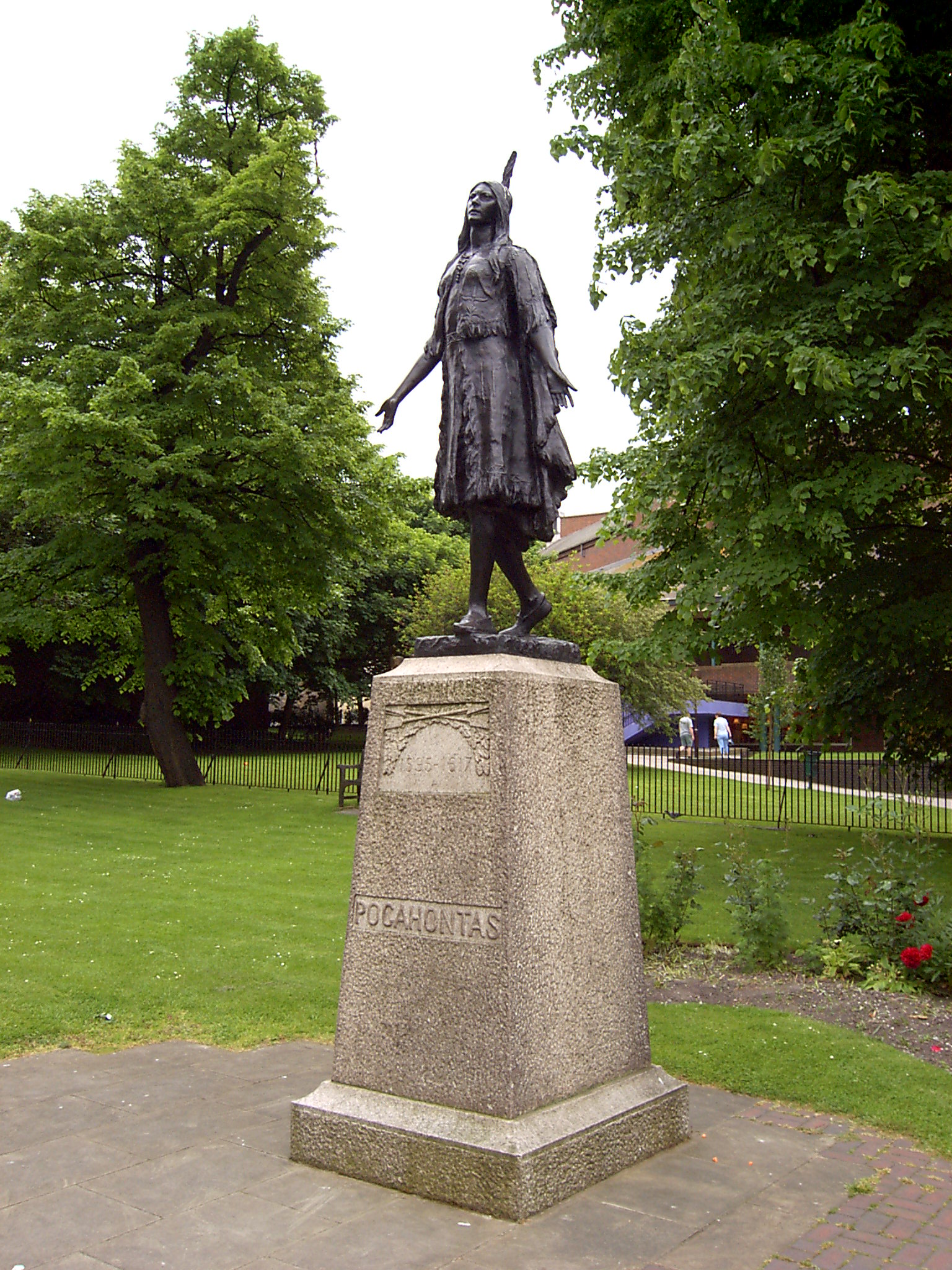
She was not the only one, as others in her party had also succumbed to ill health during the stay, two or three dying. Matachanna was also ill as the ship set off once more, such that she was unable to look after young Thomas as she would otherwise have expected to do under the circumstances. Rolfe decided that it was too dangerous to take Thomas across the Atlantic, perhaps seeing a repeat of the loss of his first family, and left him in safe hands at Plymouth, to be raised by his relatives. By the time Thomas travelled to Virginia, his father was dead.
A number of people from the county of Norfolk were amongst the settlers in Virginia. John Rolfe was almost certainly from Heacham (and Thomas was brought up there). John Smith, although from Lincolnshire, had been apprenticed in King's Lynn. Henry Spelman, hostage and interpreter with the Powhatans, hailed from Hunstanton). The Reverend who married Pocahontas and John Rolfe, one Richard Buck, came from Wymondham. Norfolk is also the name of a city in Virginia today. The county also has strong, if later, connections with the West Coast: George Vancouver was from King's Lynn and the first Christian Bishop of British Columbia was from Great Yarmouth – a key port of embarkation for the colony. None of this went well for the First Nations overall (or indeed for quite a lot of the early colonists) and the rest, as they say, is history – although a history that is now being reclaimed by First Nations.
These connections are significant because the story of the English settlement of Virginia has some sobering parallels with the plight of the ancient British peoples in the face of the Roman occupation – not by any means the same story, of course, but with resonances all the same. This seems particularly true in what is now Norfolk, where a tribal confederacy (the Iceni) did its best to hold itself apart from Roman hegemony, with its alien systems of law and land-holding, whilst enjoying the benefits of co-operation. That policy turned sour and Roman arrogance led to another strong woman finding her place in history, propaganda, legend and mythology. Red-haired Boudica’s response was very different to red-skinned Pocahontas’, but both sacrificed their own interests for the good of their people. And in both cases, there is one key voice missing from the narratives that have come down to us: their own.
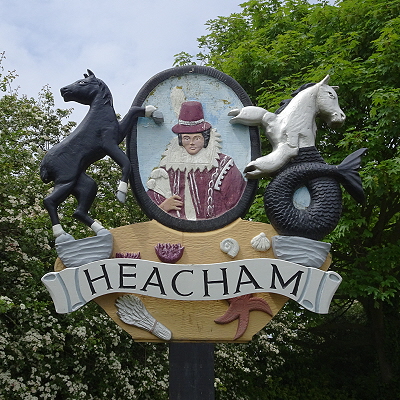
Heacham’s village sign today has a picture of Pocahontas between two prancing horses, one a ‘merhorse’, with a fish’s tail, referring to the area’s long connections with the sea. The sign commemorates the probable visit Pocahontas made with her husband to his family home at Heacham Hall in 1616. The Norfolk dialect word ickeny means anything unruly or difficult, particularly horses. ‘Little Mischief’ was certainly ‘ickeny’ to John Smith on seeing him again after so long.
With Pocahontas dead, the sacred bond was gone. It is unlikely that a truly harmonious relationship could have been forged between the settlers and the Powhatans, but the ‘Peace of Pocahontas’ was real. Pressure from land-grabbing and hostage-taking by the English mounted and Virginia had its own version of the Boudican Revolt. The revenge was left to Opechancanough. Five years went by, then co-ordinated attacks on the English settlements left a quarter of their occupants dead and ended the Peace. Five years almost to the day after Pocahontas’ death, the attack came on Friday, 22nd March 1622. Whilst it may be that the aim of this spring attack was to confine the English to Jamestown and so be able to replant their tobacco fields with food crops, it is surely not without significance that it came close to the Spring Equinox, the time of new hope, at which the Powhatans’ peace symbol was taken from them in the far off land of the invader.
As with Boudica’s revolt, however, Opechancanough’s revenge (along with his later assault of 1644, as a result of which he was captured and died) did not rid the land of its usurper, but instead allowed the English to throw off the pretence of ‘civilizing’ and Christianising the indigenous population and adopt a policy of what we might now call ‘ethnic cleansing’. The gloves were off and the concerted removal of First Nations from their lands began.
But the story of Pocahontas did not stay in the realms of history. Retold and distorted, not least by John Smith himself, it became the stuff of propaganda, legend and myth. Only in the last couple of decades has the rose-tinted tale of the "Nonpareil" of Virginia been seriously questioned.
The vision of the New World appears to have led 16th and 17th century English people to begin to consider ancient history. The parallels between the contemporary colonisation of America and that of Britain by the Romans were remarked upon. However, with literate Englishmen brought up on the writings of Caesar and Tacitus, they could envision themselves as the glorious bringers of civilisation and Christianity to the benighted savages, just as the Romans had done the service for their ancestors. At the same time, as with Tacitus, there was a romantic yearning for the freedom, vigour and innocence of the ‘noble savage’ compared with the noisome streets of London and effete society conventions – although such thinking was not shared by the members of the Virginia Company or the settlers. The popularised image of Pocahontas, defying her ‘heathen’ father and saving the poor Englishmen, fitted both the noble savage model and the propaganda needs of those whose profits depended on stealing land from the indigenous people.
The motif of the heroine who risks her birthright by helping a stranger, who sacrifices her own needs to a higher purpose, whilst being pitied for never quite being able to become part of English or American society, has become a staple of literature. It has been used to justify the treatment of the First Nations, but it has also been used to show how the heroine is actually better than ‘our’ society. She is there as the appropriately named Rebecca in Sir Walter Scott’s Ivanhoe (1820), and perhaps even as Diana Prince (see below).
From early in the 19th century, Pocahontas’ motivations have been tied to love, and novelists and movie-makers have tied themselves in knots trying to centre their stories on her alleged romance with John Smith without making him a paedophile. The fact that she was a girl of about ten or eleven when Smith met her has generally been ignored. Even the beautifully shot and emotionally engaging, The New World (2005), directed by Terrence Malick, places the romance centre-stage (as well as playing fast and loose with the chronology of events). But perhaps Malick’s idea was more subtle; certainly the casting of the then 14-year-old Q’orianka Kilcher as Pocahontas makes for an uncomfortable comparison of 21st and 17th century ideas of maturity.
The film most people associate with Pocahontas currently is the 1995 Disney animated feature, Pocahontas. It is certainly not history, and does not deviate from the brand's general homogenising treatment of cultural diversity. But it is surprisingly refreshing in that it presents the indigenous people and their world view as normal, with the English settlers as the aggressors. The prevailing indigenous mind-set, whilst clearly a generic syncretism rather than the Powhatan perpective, is actually very positive, exemplified in the best-known song from the film, 'Colours of the Wind'. The film is pervasive in part because of its marketing, however, which has exploited obvious, but questionable, niches such as plastic toys distributed via fast-food outlets, and the marketing is still happening. At the end of 2020, an edition of the Disney Princess 'edutainment' magazine appeared, devoted to Pocahontas. It is a mixed bag - on the one hand promoting art and craft inspired by nature, encouraging the reader to "paint the colours of the wind", on the other taking a less than educational approach to language, whilst providing a "Paint your own Princess Pocahontas" kit with plenty of disposable plastic.
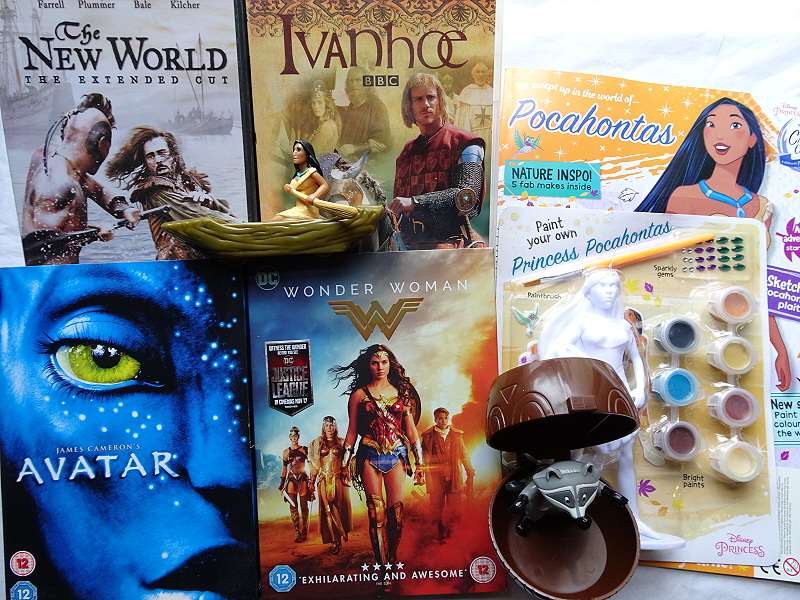
The popular DC Comics superhero, Wonder Woman, was created by William Moulton Marston in 1941. Her mundane name is Diana Prince, which gives a clue to her original back-story, extrapolated from Greek mythology. An Amazon, she is a princess and indeed a favourite daughter of the Queen of the secret Paradise Island (later called Themyscira), where no men are permitted. Diana finds an American pilot, Steve Trevor, who has inadvertently crashed on the island. In contrast to the aversion displayed by her Ovidian namesake when Actaeon accidentally surprises her in a female-only place, Diana saves the man, falls in love with him and defies her mother the Queen by entering and winning a contest to choose who should accompany him back to his world.
Once here, she proceeds to work for the good of our society as a superhero, whilst simultaneously fitting into it, in a role varying over the years according to the expectations of her male writers. Yet, even in her most submissive phase, she refuses to marry whilst she is needed to fight the bad guys, and so remains the virgin huntress.
Marston was somewhat unusual. He was a staunch feminist, who believed that matriarchy was not only essential, but also inevitable. He also had a sexually non-standard lifestyle, involving polyamoury and bondage, which probably explains the balancing act played by the Wonder Woman franchise between female empowerment and sales-empowering titillation. Indeed, she seems to have one root in the frisson of the patriarchal Classical myths of nubile women who appeal to, but shun men, and one in that of the patriarchal and white-supremacist American New World mythology, where she is the exotic virgin huntress who submits her powers to the principles of Euro-American civilization. That is indeed reminiscent of Mrs Rebecca Rolfe helping her husband grow tobacco commercially…
In one cinematic story, the 'noble savage' comes together with the 'noble outlaw' (i.e. the Robin Hood tradition) in a powerful fashion: James Cameron’s Avatar (2009), a beautiful film which weaves state-of-the-art CGI with live action. It is set on Pandora, a moon in a distant solar system, full of lush life in a fantastic rainforest, where humans are strip-mining a rare mineral. Despite the atmosphere not being breathable by humans, a science team is in on-going communication with the native people, known as the Na’vi, or "The People", by means of living "avatars", genetically engineered from Na’vi and human DNA. The team’s role is to bring unwelcome ‘modernity’ to the Na’vi "savages" and persuade them to move from their home, which just happens to be right over the largest deposit of the much-sought after mineral. This location is actually not surprising, as the mineral appears to be integral to the powerfully animist relationship between all life on Pandora.
Into this story is thrust Jake Sully (played by Sam Worthington), who has been invalided out of the military with a spinal injury and uses a wheelchair. His brother is meant to join the science team on Pandora, but is killed on dystopic Earth. Jake’s genes are close enough to use his brother’s avatar, so despite not being a scientist, he is persuaded to take the job. Finding himself in a fully functional body, if vicariously, gives Jake a new sense of freedom. He also finds a new cause, as he ‘goes native’ and, along with a Na’vi woman, Neytiri (played by Zoë Saldaña), leads a successful revolt against the mining company, which wants to destroy the Na’vi’s sacred home for the sake of profit, not understanding (much less caring) that they are destroying everything that makes Pandora special.
There are many religious references in the film. The name ‘Na’vi’ is Hebrew for ‘prophet’, and basically the same as nabi with that meaning in Arabic, Urdu and Hindi. The blue skin-colour of the Na’vi (and the "avatars") reflects the traditional Hindu colour of divine avatars. Sigourney Weaver’s character, head of the science team bringing ‘civilization’ to the Na’vi, is Grace Augustine, a reference to Saint Augustine, who is credited with Christianising England. There are also many apparent influences from, or perhaps homages to, other films and books, such as Apocalypse Now, Lord of the Rings, Star Wars, The Last Samurai and Princess Mononoke, not to mention the art of Roger Dean, to some of which James Cameron admits.
However, perhaps the largest inspiration for Avatar was Disneys’ film of Pocahontas. Some of the references are overt. "The People" are clearly based on Native Americans and have a similar spirituality. Their Goddess or Great Spirit (Eywa) is presented as being very like the Native American ‘Great Mystery’. And the female lead, Neytiri, is the daughter of the Na’vi chief and rescues Jake Sully (although not from her father). Apparently Cameron originally wanted her to be played by Q’orianka Kilcher, who portrayed Pocahontas in Terrence Malick’s The New World. Other references are more subtle. One of the science team and avatar-operators is called Spellman, probably after Henry Spelman, hostage and interpreter with the Powhatans in Virginia. Jake Sully’s initials are of course the same as those of John Smith, and, like Smith in real life, he is not welcome on the (science) team. (Smith’s place on Jamestown’s ruling council was disputed by the other members.)
But in Jake Sully, the ‘John Smith’ character is taken much further even than Disney, never mind history. The direct origins of the ‘wounded soldier goes native’ motif as presented in Avatar are to be found in other films and American historical events, but by being brought into the forest of Pandora in this way, it resonates with the Noble Outlaw. John Smith had a strong streak of defiance, being a commoner unwelcome in the presence of gentlemen, but quite able to give orders himself. He never actually became a friend of the natives (contra Disney), and certainly doesn’t send his countrymen packing, but Jake Sully does. And it is a partnership between Jake and Neytiri. She brings the native practicalities and wisdom; he brings enough exotic thinking and knowledge of the threat to galvanize the Na’vi resistance. Jake chooses to leave the bounds of his culture, sacrificing his place in that society and the offer of spinal surgery to give him back the use of his legs, and becomes thereby an outlaw. Like Robin Hood in Sherwood Forest, empowered by Mary or Marian, as Sovereignty, to defend Her Greenwood (in a modern understanding of the myth), Jake Sully is empowered by Neytiri, as agent of Eywa, to defend Pandora. The Wounded King becomes an avatar of the Noble Outlaw, the Culture Hero and Trickster who brings the spark of chaos to restore equilibrium.
There is a valid criticism of the mythic blockbuster movie. The good guys win and the heroes rarely die. In the mundane world things are not usually as positive. Boudica’s revolt was crushed, as were the English rebellions of 1549. In the 17th century, the Virginia settlers pushed ever harder against the Native Americans, the Peace of Pocahontas was broken, and the invasion rolled on. Today, development-induced famines still haunt the Third World; settlers still force people off their land; and the rainforest has not been saved. In 17th-century Virginia, the cash crop was tobacco, now we have beef cattle, soya and biofuels. And irresponsible mining only really gets noticed in the West when it is fracking under our own feet.
It could be argued that the excitement of the film action, ratcheted up by emotional engagement and awe-inspiring sets or CGI-landscapes, followed by the good guys triumphant and living happily ever after, allows people to ignore the real-world issues. "Jake and Neytiri won, so we don’t need to worry about the Amazon rainforest". Disney’s Pocahontas may be significant in the evolution of the myth, but is dangerous misinformation if taken as history, helping people to ignore the gap between its feel-good ending and the reality of four hundred years of dispossession, famine, slavery and genocide.
Against this argument is the need for hope. Being prepared to die for a cause is one thing; knowing without doubt that you will be killed, without the global situation noticeably improving, is somewhat dispiriting. Like Pocahontas – the real one – you do what you can for the best, within the bounds of possibility, with honour. But you have to have hope. As T.H. White has Merlyn say to King Arthur, immediately prior to his fateful final battle with Mordred’s forces and apparently fruitless demise:
"You will fail because it is the nature of man to slay, in ignorance if not in wrath. But failure builds success and nature changes. A good man’s example always does instruct the ignorant and lessens their rage, little by little through the ages, until the spirit of the waters is content..."
(In his intended conclusion to The Once and Future King (1958), published later and separately as The Book of Merlyn (1977, Collins), pp. 127-8.)
Myths evolve, and popular culture is their playground. Their evolution is guided by trends in popularity, by conservatism and by novelty, by money, by events, and by intent. Myths can also be made real by intent, by the magic of ritual acts. And by living with intent.
The legend of Pocahontas has served various purposes over the centuries, many of them of at best questionable value from today’s perspective. Her adult life was decided for her by others, yet she chose a path, not of acquiescence, but of honour. She did the best she could under the circumstances, for her people and for her new family. She could not change the course of events, driven by arrogance and greed, clothed in an ostensibly loving religion. But she shows a path of hope, living a life that was a bridge between people, sadly cut short.
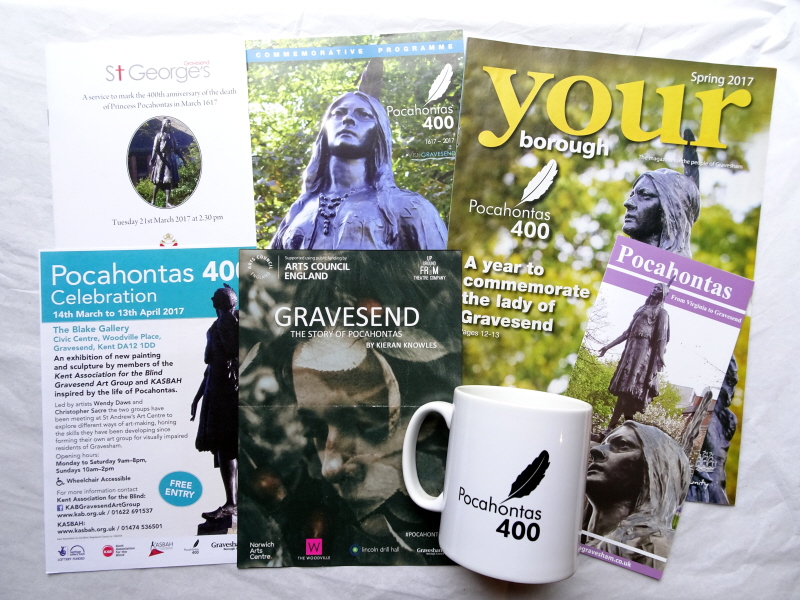
The best introductions to the life and times of Pocahontas are to be had in Rountree and in Townsend (notwithstanding some detail errors in the latter), although Barbour and Mossiker did essential groundwork. Custalow & Daniel is enlightening, but comes from oral tradition, which is no more accurate than European texts and less readily analysable. Some of the book’s claims, such as Pocahontas being murdered, may be more traditional speculation than the result of eye-witness testimony. Richter provides an excellent overview of the wider picture of the European invasion of America, and Tilton charts the evolution of the Pocahontas legend.
This article is adapted from two articles, 'Pocahontas: Propaganda, Legend, Hope' and 'Noble Avatars: The Outlaw Meets the Savage', by Chris Wood, published in the magazine Quest, nos. 189, March, and 190, June, 2017.